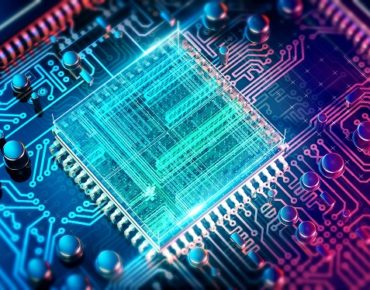As I am transitioning into a new leadership position, I am confronted with the higher truths of leadership and how they unfold within an entrepreneurial orientation and, further, a humane entrepreneurial orientation (as found in the theory and practice of Humane Entrepreneurship, or HumEnt). Leadership grasps the critical importance of creating workplace climate and culture, thus determining the state of the Humane Entrepreneurship at any given enterprise.
Since performance is often considered the result of environmental characteristics and an organization’s internal structure and systems, we must look to the climate and culture creating mechanisms at play within organizations. Leadership is one of significant, if not total, importance.
Within the examination of leadership, effective leadership most often refers to the “ability of a firm’s top managers to select and apply the ‘correct’ strategic approach or effectively implement an appropriate strategy” (Kim et al. 2018). In motivating employees, or “followers,” to carry out activities determined by leaders, such leadership must provide “desirable rewards for effective performance or undesirable consequences for poor performance” (Hollander 1992). Termed “transactional leadership,” this is typically categorized into “social exchange” (Graen and Uhl-Bien 1995). Conversely, “transformational leadership” works based on inspiring individuals to “perform at exceptional levels” (Bass 1985). In this case, a leader inspires their followers by creating an ecosystem of similar values, beliefs, and goals, so that followers feel a sense of ownership and commitment to their work.
In either case, this top-level leadership determines organizational performance. Leadership within organizations that are humanely and entrepreneurially orientated serves “more complex and difficult roles than traditional leaders” (El Tarabishy and Sashkin 2006). These specific roles involve the typical leading requirements of encouraging employees and followers to engage with their work as well as their own innovative and proactive projects.
Within an entrepreneurial spirit, which itself belongs to the principles of innovation, leadership involves discovering new ways to connect with one’s employees, and therefore, entrepreneurship is deeply seated in the great adventure of connecting to the human spirit. It is this relation, namely, that if successfully fused, it can seamlessly generate a culture of efficacy, empathy, progression, innovation, creativity, and determination.
In understanding this quite spiritual force at play within-firm success, our definition of Humane Entrepreneurship must consider an even greater appreciation of appropriate leadership strategies that will eventually direct us to a type of leadership that functions more authentically and aligns more closely to the human person.
If leaders can be a driving force for organizational performance, we might consider servant leadership as a final solution to our incomplete leadership equation. In understanding that an organization based and, even, created in light of humane entrepreneurship will generate enormous wealth and increase employment opportunities, the role of the leader in this climate and culture-creating effort must also come from a human-focused center.
“The servant-leader is the servant first. It begins with the natural feeling that one wants to serve, to serve first. Then conscious choice brings one to aspire to lead. That person is sharply different from one who is leader first, perhaps because of the need to assuage an unusual power drive or to acquire material possessions. The difference manifests itself in the care taken by the servant first to make sure that other people’s highest priority needs are being served. The best test, and difficult to administer, is: Do those served grow as persons? Do they, while being served, become healthier, wiser, freer, more autonomous, more likely themselves to become servants? And, what is the effect on the least privileged in society? Will they benefit or at least not be further deprived?” (Greenleaf 2016).
In my understanding of building a workplace climate and culture that is both cyclical and just, servant leadership seems to be the missing, next step in our high-performance puzzle. Despite society’s desire and sincere belief that followers work most efficiently by submitting to orders, the application of the principles of Humane Entrepreneurship, and specifically those components of servant leadership, flips this idea on its head, by stating that employees will produce higher quality work at greater efficiency when they are lifted as individuals first and as employees second. By engaging with the human spirit and, further, embodying this engagement, leaders become servants to the very people that they seek to guide.
Servant leadership can, then, be thought to be the way of the future. In signaling to our teams and employees that their advancement, autonomy, and growth, both professionally and personally, is of utmost significance in our lives, we might just initiate a new wave of enterprise for our firms, nations, and society at large.
Article by:
Dr. Ayman El Tarabishy
President & CEO, ICSB
Deputy Chair, Department of Management, GW School of Business
Resources
Bass, B. M. (1985). Leadership and Performance beyond Expectations. New York: Free Press.
El Tarabishy, A, and M. Sashkin (2006). “Entrepreneurial Leadership: Exploration of a New Construct,” Paper presented at the Bi-Ennial Gallup National Leadership Conference, Washington, DC, October.
Graen, G. B., and M. Uhl-Bien (1995). “Relationship-Based Approach to Leadership: Development of Leader-Member Exchange (LMX) Theory of Leadership over 25 Years: Applying a Multi-Level Multi-Domain Perspective,” The Leadership Quarterly 6(2), 219–247.
Greenleaf, K. (2016). “The Servant as Leader,” Center for Servant Leadership. Available at (click here)
Hollander, E. P. (1992). “Leadership, Followership, Self, and Others,” Leadership Quarterly 3(1),43–54.
Kim, K., A. El Tarabishy, Z. Bae (2018). “Humane Entrepreneurship: How Focusing on People Can Drive a New Era of Wealth and Quality Job Creation in a Sustainable World,” Journal of Small Business Management 56(S1), 10–29.








